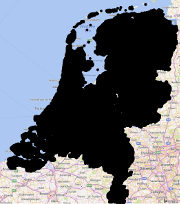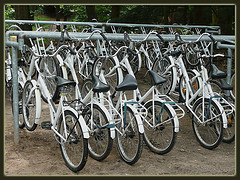 “I know my country is a crowded one”, starts a question on question-and-answer website Stack Exchange.
“I know my country is a crowded one”, starts a question on question-and-answer website Stack Exchange.
But “where in The Netherlands am I furthest away from any city or town?”
Usually these sites have lots of opinions and very little in the way of meaningful answers, but one Ptityeti decided to go the extra mile and do the research. Luckily the two datasets they needed are both open and Creative Commons licensed. Openstreetmaps provides detailed maps of the country, and the government-created BAG database contains the exact position of every building in the country.
In turns out the recent nature reserve Oostvaardersplassen (reclaimed from IJsselmeer in 1986) is the winner, beating out the Drowned Land of Saeftinghe, the Lauwersmeer and Veluwe. If you went to Oostvaardersplassen, the furthest away you could be from any building is 2.5 kilometres (1.5 miles). What it basically boils down to though is that you have to hike into any of a number of former sea inlets, with Veluwe being the only place that can be considered proper land.
There were a few other conditions to the question. The place had to be on mainland Netherlands (we have a couple of uninhabited islands that would otherwise be clear winners) and couldn’t be a dike or dam, or Afsluitdijk might have won.
Ptityeti’s fascinating post details the sort of caveats one has to take into consideration if one wanted to answer a question like that. Even the question “how do I get as far away from people as I possibly can in the Netherlands?” is not answered by looking at datasets of building locations. After all, the answer to that would probably be “take the plane to Canada”. In the Netherlands, you do not get away from other people.
Illustration: Stack Exchange / Ptityeti.


